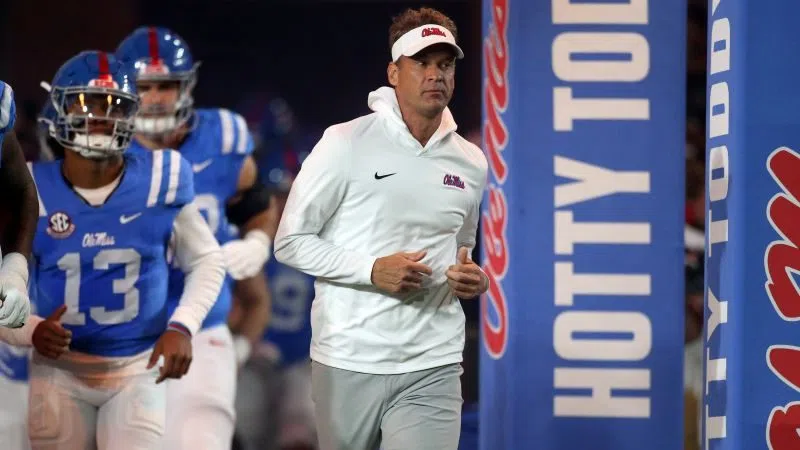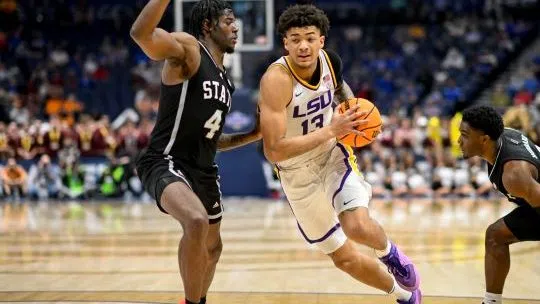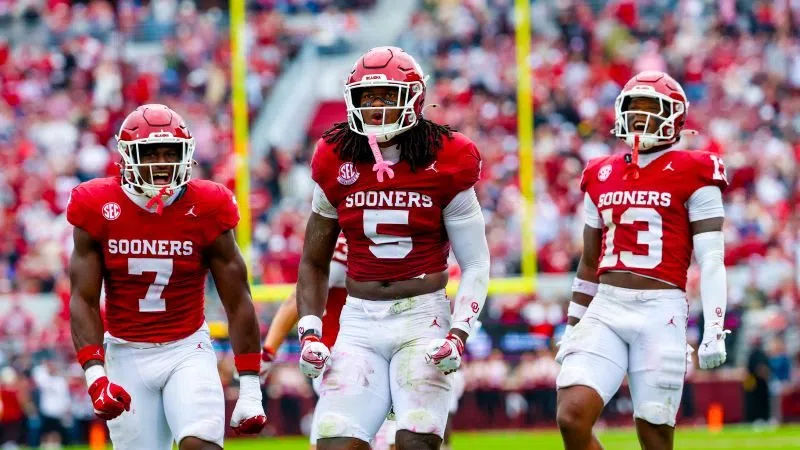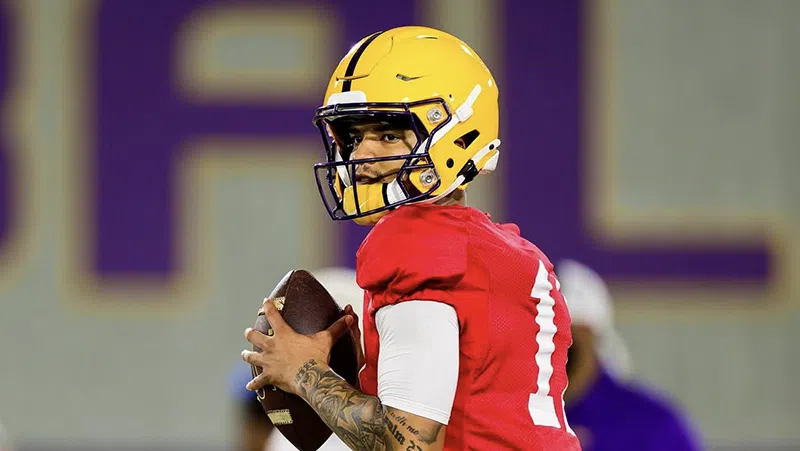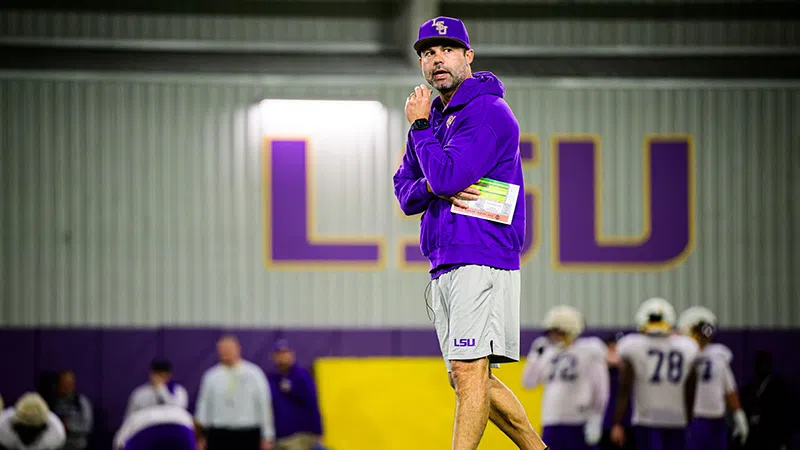
LSU Athletics
By Hunt Palmer
Every national championship team is different, but they can all win at the line of scrimmage.
In the early years of this “Golden Era” of LSU football, Baton Rouge was an assembly line of defensive linemen ticketed for the NFL.
Nick Saban started things with Marcus Spears, Chad Lavalais, Kyle Williams and Marquis Hill. That tradition continued with Glen Dorsey, Tyson Jackson, Al Woods and Drake Nevis. Each individual achieved different levels of success at the next level, but the constant was exceptional defensive line play year-in and year-out in Baton Rouge.
LSU has produced one first or second round pick at defensive line since 2015—Maason Smith. That’s a decade of drafts.
The standard that helped create LSU football’s dominance hasn’t been met.
Williams, one of the foundational pieces in the program’s history, has been challenged with changing that alongside edge rushers coach Kevin Peoples. The group they’ve helped assemble this fall may lack the superstar power at this point on the calendar, but its depth is its strength.
“I feel really good about for or five at both of those positions, defensive end and defensive tackle,” said defensive coordinator Blake Baker. “I look at them as 1-A and 1-B. It’s a luxury to have those guys.”
LSU finished 2024 12th in the SEC in rushing yards allowed per game and 13th in yards per carry allowed. No team in the league allowed more rushing touchdowns than LSU—26. Furthermore, no team in the league faced fewer rushes than LSU.
LSU was tested the least and surrendered the most.
Six of the top 13 rushing defenses in the country made the CFP last season, and the average run defense ranking of the final eight teams left was 24th. LSU finished 51st.
It’s impossible to win at a high level with rushing defense like that.
Texas A&M and Alabama sent LSU’s season into a tailspin by rushing for a combined 553 yards in two games on nearly six yards per carry. They scored a jaw-dropping 11 touchdowns on the ground.
When LSU played its best defense, the pass rush got home. LSU had five sacks in the thriller at South Carolina, one created a fumble and another knocked LaNorris Sellers out of the game. The Tiger rush got to Jaxson Dart six times in the overtime win over Ole Miss.
The rush never showed up against Alabama or Florida. LSU hung a goose egg in the sack department in both losses.
Baker feels like this group will be far more consistent.
“When you look at them rushing the passer, the front four, the biggest difference this camp to last year’s is we’re getting some pressure from the inside,” Baker said. “It’s not just the edges. To be able to push that pocket, that’s just as important. When you look at last year, we were one of the best teams in the country in terms of pressuring the quarterback…but it’s all got to work together, front and the coverage, but also the front four. Our ends were right there, but if we could have gotten a little bit more push inside, the quarterback goes down.”
Baker’s assertion from watching the film checks out in the stats.
The Tigers’ primary defensive tackles, Gio Paez, Ahmad Breaux and Paris Shand, combined for three total sacks a season ago. Kyle Williams’ group appears poised to multiply that number this year as Breaux and fellow sophomore Dominck McKinley develop. Jacobian Guillory returns for a sixth season, but more importantly Bernard Gooden comes in from South Florida.
He’s a specialist in the pass rush game.
“That was a great pickup,” Baker said. “Bernard Gooden has been a joy, in every sense of the word, to coach. He is high energy. Y’all probably hear him on the field more than anyone else. But in today’s game, you even look into the NFL, a lot of really successful defensive tackles are going to be between 280 and 300 lbs.”
Gooden may be undersized in the traditional sense, but LSU’s interior offense line has not found an answer for the explosive transfer through three weeks of camp. He’s set up shop in the backfield against the run and rushing the passer.
And he’s let the offense know about it every time he makes a play.
“The thing that he does really well because he is so twitchy and has such good get off, his second foot is in the ground before the offensive lineman,” Baker said. “So, even though he might be giving up 30 pounds, he’s able to get leverage and get power, and the offensive lineman doesn’t have his second foot in the ground.”
Undoubtedly, Gooden adds to LSU’s interior pass rush with his quickness, but the question remains whether or not he can bash heads with SEC guards in the ground game over four quarters.
In last season’s matchup with Alabama, Gooden was South Florida’s highest graded run defender at 77.3 over 21 snaps against the Crimson Tide ground game.
“One of the things that we did through the evaluation process, obviously being an undersized guy, is really evaluate him hard against the run. We really liked what we saw,” Baker said. “And we really, really like what we see up to this point. He’s done a great job creating havoc and holding point.”
A drastic improvement is going to be necessary for LSU to make the jump from Texas Bowl favorites to College Football Playoff qualifier. Much of it will have to come upfront defensively.

More LSU Sports

